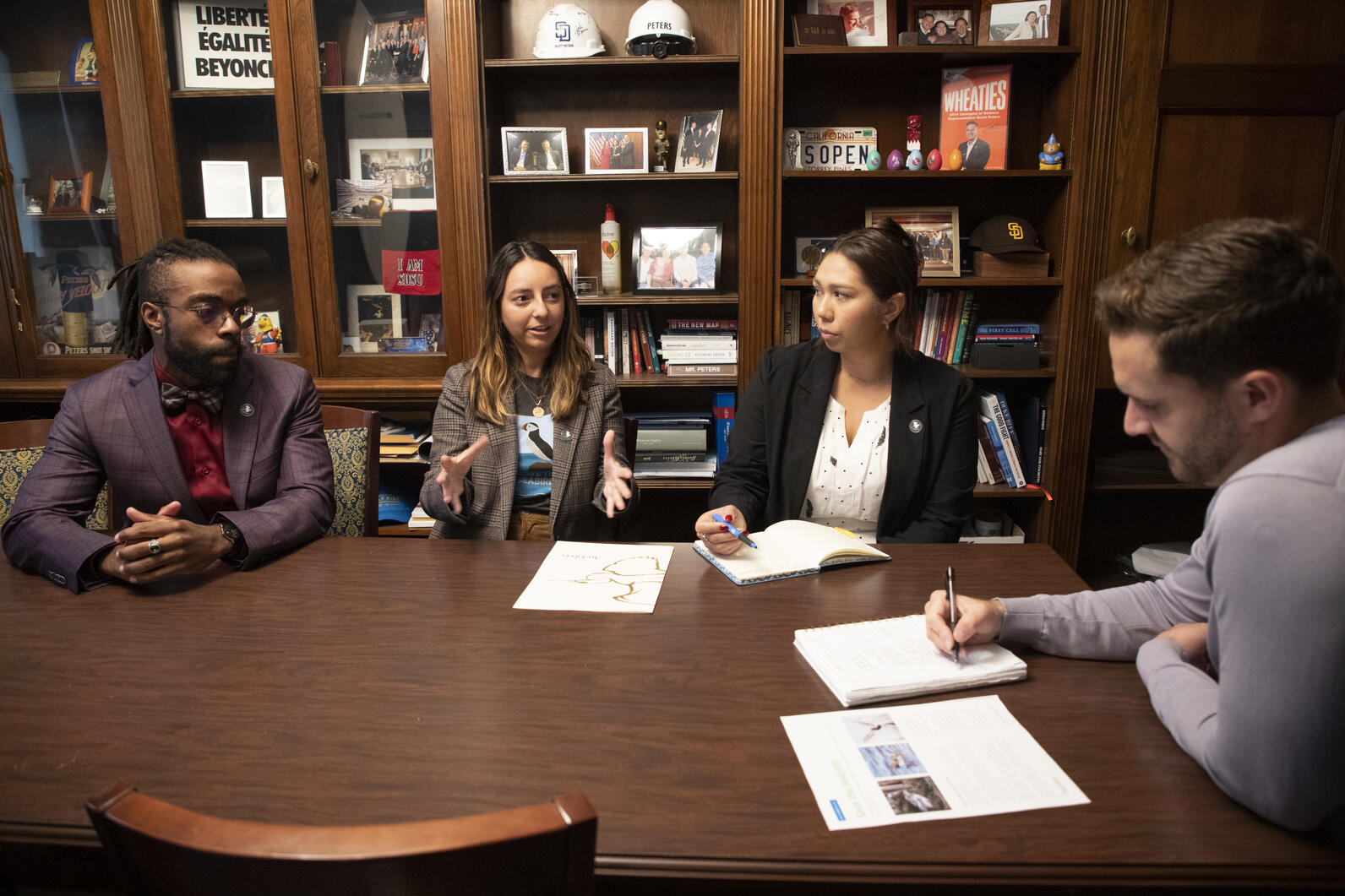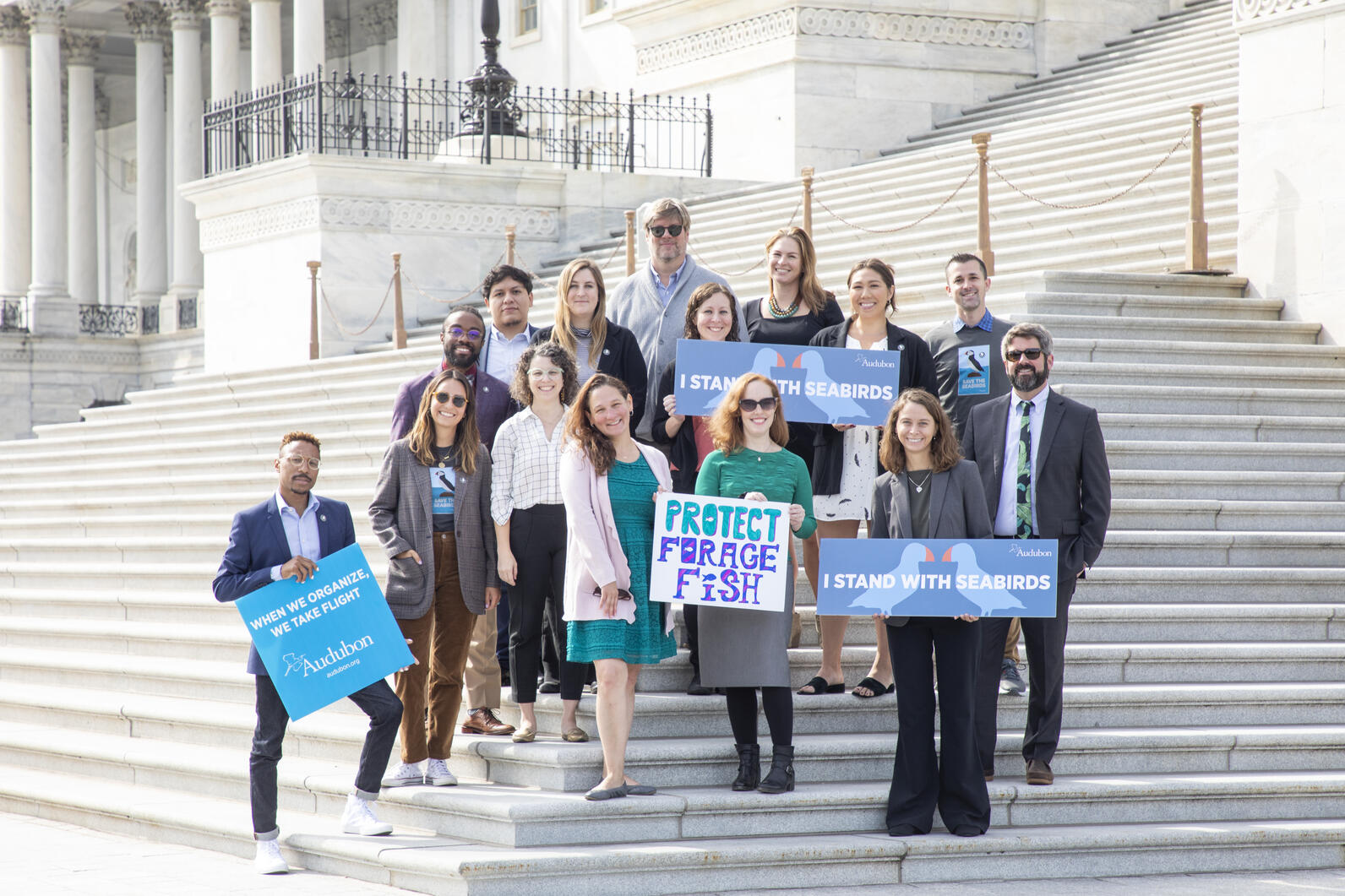Article by Liliana Griego (Sr. Coastal Program Manager) & Samantha Samuelsen (Government Affairs Program Manager)
In the spirit of fall migration, we took flight to Washington D.C. for the Seabird Fly-In, a day of advocacy when the Audubon community meets with members of Congress to advocate for the protection of seabirds. Globally, seabird populations have declined by a staggering 70 percent since the 1950’s. At this year’s Seabird Fly-In, Audubon members from across the country focused on supporting policies and securing funding to protect the food supply and habitats for seabirds like Brown Pelicans, Atlantic Puffins, Common Murre, Black Terns, and the communities connected to them.
We met with Congressional offices to encourage bold action for a more resilient coastline and focused on Audubon’s support of two bills, the Magnuson-Steven Fishery Conservation and Management Act and the Resilient Coasts and Estuaries Act. We also shared the restoration work Audubon is currently doing along California’s coastline, including lagoon restoration in southern California and an eelgrass habitat suitability study in the San Francisco Bay.

Plenty of fish in the sea? Well, that might not be the case for forage fish, such as sardines and herring that are vulnerable to overfishing. To help prevent continued overfishing, we must update the Magnuson-Stevens Fishery Conservation and Management Act, the nation’s only federal fisheries law established in 1976, to support plentiful populations of forage fish for seabirds and marine life to feed themselves and their offspring. This update includes policies to prevent seabirds from getting entangled in fishing gear, ensures fisheries are climate-ready, and protects coastal areas by designating them as essential fish habitat. As we see worsening sea level rise and coastal erosion due to climate change, our advocacy focused on how resilient coasts support and sustain resilient communities in California, and globally.
This led directly into a discussion of the Resilient Coasts and Estuaries Act to fund the Coastal and Estuarine Land Conservation Program. This program invests in our coastal ecosystems and the people and birds who rely on them. The Act creates five new Research Reserves, which are designated areas that conduct scientific research, and will expand modeling on climate change impacts as we work on the ground toward a more climate-resilient future.

When meeting with staff from Rep. Levin and Peter’s offices, we shared the exciting work chapters like Buena Vista and San Diego Audubon are doing to restore degraded lagoons along the San Diego County coast.
Of course, we had to see some birds while we were in DC. We viewed the birds on display at the Smithsonian Natural History Museum, bird watched along the National Mall, and spotted bird memorabilia in Congressional offices. Fun fact, of the offices that we met with, Representative Costa had the most bird art displayed, including an original drawing of a Red-headed Woodpecker by Senator Dianne Feinstein.
We had a great time meeting folks from the Audubon community, connecting with Congressional offices, and learning ways we can all work together to create a thriving, resilient and healthy coast for all. If you're interested in advocating for these bills to your Representative, you can find your representative HERE. You can download the Save the Seabirds Flyer to share with their office. Thank you for standing with seabirds!






